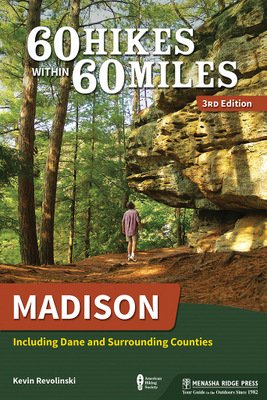Why Go to Bangkok?
It’s hard to believe that it’s been nearly seven years since I first came to Bangkok. Back in early 2006 student protests disrupted a couple days of my business trip and a few months later there was a nonviolent coup. I was here when Yellow Shirt protesters shut down the international airport and there were no Thailand flights for nine days in 2008. During the Red Shirt riots of 2010, I stayed right at the edge of the barricaded zone until the evening “fireworks” and the morning’s bullet holes in the gas station wall next door compelled us to wait it out elsewhere. I rode in a taxi through the burning tire smoke during the military’s deadly, protest-ending crackdown. And then a devastating flood put Bangkok and much of central Thailand in a stranglehold in 2011.
After even just one of these kinds of events, most destinations might need a decade to convince the tourist trade it was a good idea to come visit again. And if the reality didn’t discourage people, the narrow view of the seedier side of Bangkok in The Hangover II might be enough. Yet throughout all this, the City of Angels remains at the top of the list for travelers. Recently, the Conde Naste Traveler Readers’ Choice Awards 2012 named it the #4 city in the world and #1 in Asia.
What gives? Part of the credit should go to the travelers themselves for understanding what are realistic dangers for tourists and what are headlines selling ad space. Even the two-month occupation by Red Shirt protestors, and its shockingly violent end, were easily avoided by anyone staying out of that zone. Tourist attractions remained open throughout the unrest and the flood, and sites outside the city can feel like another country altogether.
But still, the heat is a bit much sometimes. The air pollution may bother some. While it has its ultramodern side and a really effective SkyTrain and subway, many of the streets and sidewalks give it a real rough-around-the-edges atmosphere. Bangkok is not going to be mistaken for the nearly antiseptic Tokyo, and unlike Shanghai, the local and the traditional blend right into the modern and aren’t set aside as a museum-like nod to the past or a mere tourist attraction. The gritty street vendor is right out on the walk in front of the Louis Vitton showcase window.
So what is the answer? I say it’s magic. The magic of a place that despite all modernity maintains a true sense of otherworldliness. The incense drifting through the air from the mystical Erawan Shrine right past the doors at the Grand Hyatt just steps away. The customary grace of the people which can make a visit to a $5 an hour spa seem like you’ve been mistaken for royalty. The glittering temples and the high-end fashion malls; the sputtering tuk-tuks and the dirty canals. Food carts and clothing vendors cluttering the broken sidewalks; green parks bustling with exercisers throughout the day and massive aerobic dance groups in the evening. Even that seedy side no one in the tourist authority would want to talk about has become an attraction; families with kids walk through the Patpong night market. The city turns you around leaving you dizzy like you’ve been on a frenetic merry-go-round, and a raging calliope pours out a tune you’re not quite familiar with but you want to sing along.
And then there’s the Chao Phraya River. The potency of a national riverway, muddy and serpentine, draining the northern half of the country right through the capital city and into the nearby sea. The river is relentless, always working. A pulsing artery of raw life, of working barges, of commuters, of dinner cruises and longtail boats, and of kids and fishermen incredibly slipping into the dirty shallows along the edges.
And yet it is accessible to a tourist for pocket change as you hop on and off at floating metal piers screeching at their pylons in the crisscrossing wakes to slip into Chinatown or the Grand Palace or some place you’ve never heard of that isn’t in your guidebook. Cross that river and you can bicycle along narrow concrete paths amid houses held just above the soggy world on stilts and set along canals that take you back to the way Bangkok used to look less than half a century ago.
That’s just a few of the tricks this magic city has to offer. So what are you waiting for?
Hotels
In Bangkok you have the full range of possibilities. As expensive as you can’t afford right on down to a couple crumpled bills for the night. The Mandarin Oriental, consistently ranked among the top hotels in Asia, perches luxury along the river, while many hostels offer a dorm bed for less than $10. Long term travelers might move into one of the myriad service apartments with all the amenities, while savvy backpackers or “digital nomads” find studios for less than $300 per month. Boutique and mid-range hotels cover everything in between.
Food
Thai food is delicious. It can be spicy as you can stand, cheaper than you’d expect, and, because the Thai seem to be constantly eating, never more than a few steps away.
Street food rules the day. Fresh cooked in a wok over a burner in a food cart, stir fries will set you back less $1-2. Whole rows of vendors congregate at street corners or in open spaces between buildings. Food courts serve cheap eats to hordes of office workers who come in heels or business suits to sit on little plastic chairs at metal tables and eat curries, noodle soups, and fried rice.
“Expensive” fresh seafood restaurants are still absurdly cheap compared to Western prices, and international or fusion restaurants are plentiful as well. An eating vacation is not unheard of.
Shopping
All the big name brands are here spread among a glut of shopping malls that are popping up like mushrooms. Much of what you want to see is conveniently connected to the Skytrain. For the bargain hunters, there are street markets such as the tables along Sukhumvit Road, the Chatuchak Weekend Market, or even the low-end mall at the multi-story MBK next to National Stadium.
Attractions
Thai history, art, royal monuments, zoos, an aquarium, amusement parks, and palaces – whatever your fancy, it’s here and it’s affordable. The endless collection of temples may soon wear most travelers out – though the Reclining Buddha at Wat Pho, a sunset behind Wat Arun, and the temple complex at the Grand Palace should at least be the short list – but then you can head into Bangkok’s excellent Chinatown, or attend a meditation school at a temple, or see a traditional puppet show at the newly relocated Joe Louis theater along the river at Asiatique.
And if you think this restless city won’t leave you restful, get to one of the spas. Devarana Spa at the Dusit Thani Hotel has taken many top honors in Asia. But a $5 foot massage for an hour might be enough as well. There’s even a massage parlor at Wat Pho where graduates from the nearby massage school invite you to recline like the nearby Buddha while they work out all your knots.
Getting There
Bangkok is a major hub for international flights and a number of airlines can get you in-country with cheap international airfares. The long hauls from the Americas are still pretty pricey, so set up a fare alert and keep your eyes open for the best deal.
For more information about Thai travel, consult the Tourism Authority of Thailand.







 ORDER YOUR COPY TODAY!
ORDER YOUR COPY TODAY! ORDER YOUR COPY TODAY!
ORDER YOUR COPY TODAY!
Bangkok is awesome. I was less excited to go there than the rest of the cities I went to in Thailand, however, I was very pleasantly surprised. Bangkok is great.
what’s your favorite massage (foot and thai) in the 100-150bt/hr range?
I used to like Pimmalai Spa in Bangkok for its atmosphere, but too inconsistent. Prices in Bangkok often hit 200-300 baht for an hour. But this riverside open-air massage place is cheap and not bad. I find it worth it to pay a wee bit more and go to Nuch’s in Sukhumvit Soi 24 across from Emporium shopping center. They allegedly all trained at the Wat Pho massage school (another good place to go by the way – Wat Pho!) and I have never had a bad one there. Always busy, always good, and a frequent user card to get a free one after 10 massages. I go for foot but will try Thai massage later this week if I can.